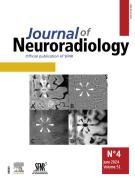Pediatric Cervical Spine Clearance after Blunt Trauma and Negative CT: What is the Role of MRI? - 26/05/24

This article has been published in an issue click here to access
Abstract |
Background and purpose |
The cervical spine in children has marked anatomical and biomechanical differences compared to adults, leading to significantly different patterns and incidence of spinal injury, and consequently to different X-Ray and computed tomography (CT) imaging recommendations. Magnetic resonance imaging (MRI) has been validated to clear cervical spine trauma in adults, but not in pediatric patients. We hypothesized that MRI findings have a low probability to change management in children with spine trauma and negative CT findings.
Materials and methods |
We reviewed records for admitted pediatric patients due to blunt trauma from January 2011 to May 2021, and identified 212 patients who underwent MRI within 3 days of a negative CT. Two neuroradiologists independently reviewed all CT and MRI images for the following categories: fracture, subluxation, spinal canal compromise, ligamentous injury, spinal canal hemorrhage, cord contusion and soft tissue hemorrhage. We identified follow-up MRI examinations as negative or positive for the above categories, and calculated the prevalence of each category as a percentage of cases with negative CT. We also evaluated whether negative and positive MRI groups differed significantly with respect to age and sex of the patients.
Results and conclusions |
In our study of 212 children with cervical spine trauma and a negative CT, most follow-up MRI scans were found to be negative (79.9%). Positive MRI findings consisted mainly of ligamentous sprain without disruption (15.1%). Ligamentous disruption and epidural or soft tissue hemorrhage were found in 4.5%, and focal cord contusion in 0.5%. There was no statically significant difference between negative and positive MRI groups with respect to age (P = 0.45) and sex (P = 0.52).
Conclusion |
In our patient group with a negative CT, MRI did not significantly impact management nor contribute to cervical spine clearance in children.
El texto completo de este artículo está disponible en PDF.Keywords : cervical spine, trauma, clearance, CT, MRI
Esquema
Bienvenido a EM-consulte, la referencia de los profesionales de la salud.
El acceso al texto completo de este artículo requiere una suscripción.
¿Ya suscrito a @@106933@@ revista ?

